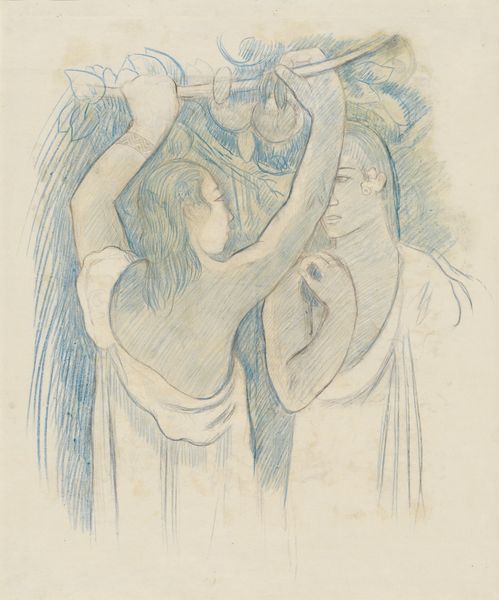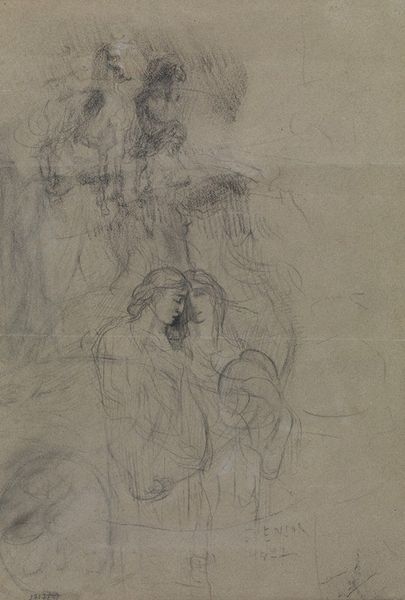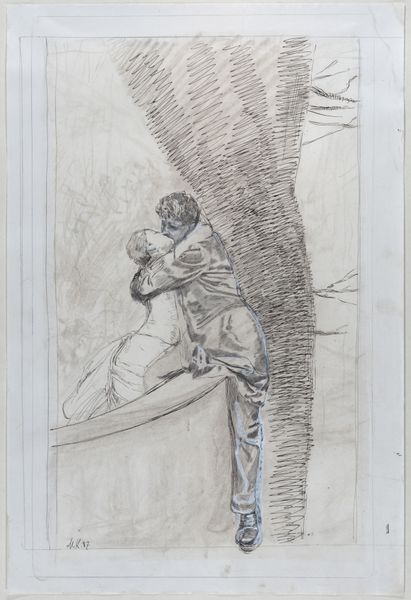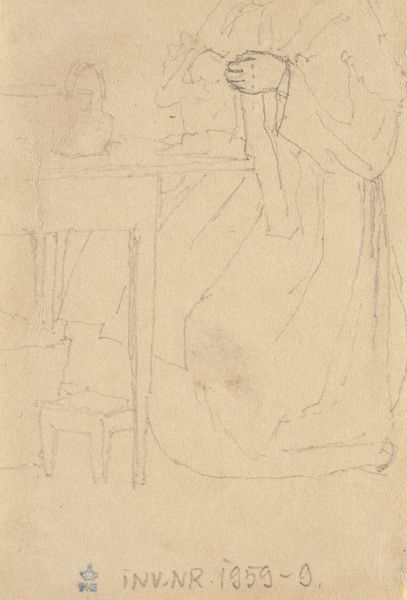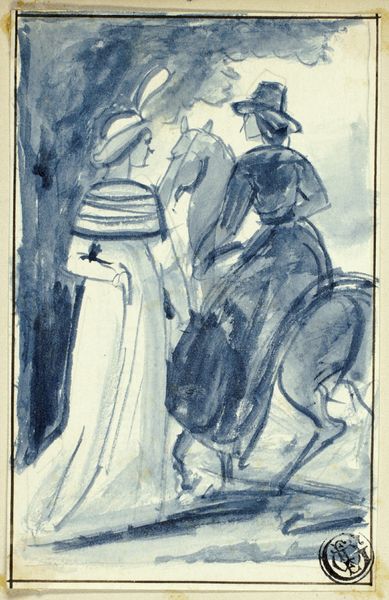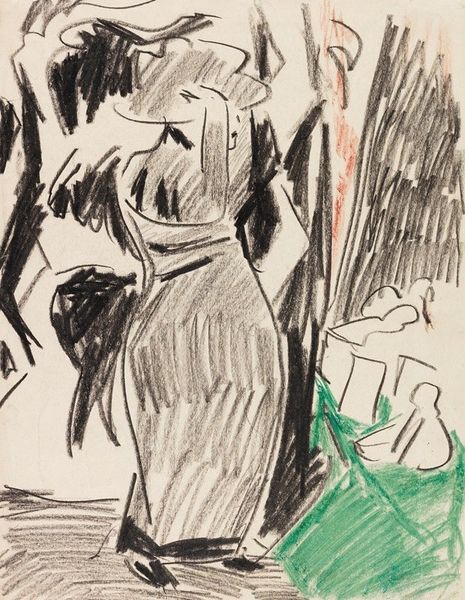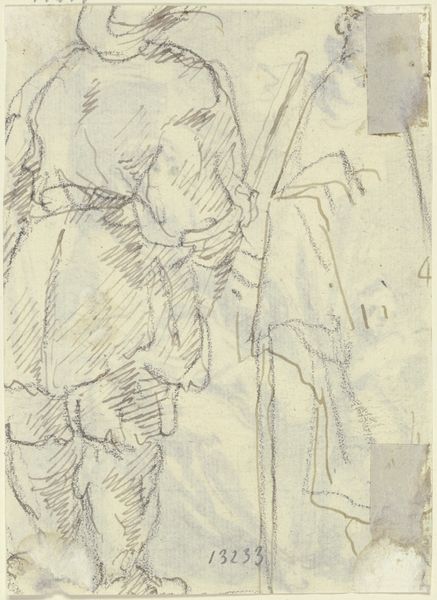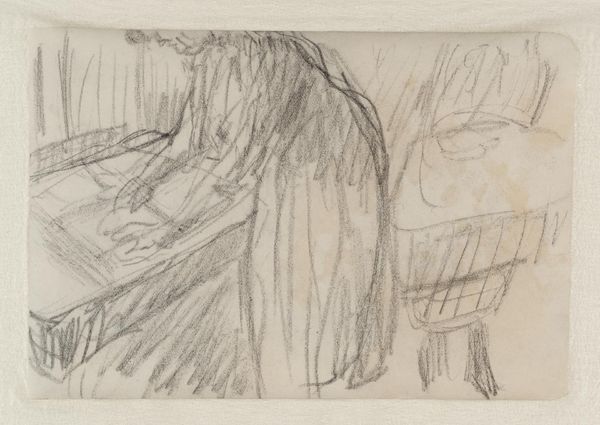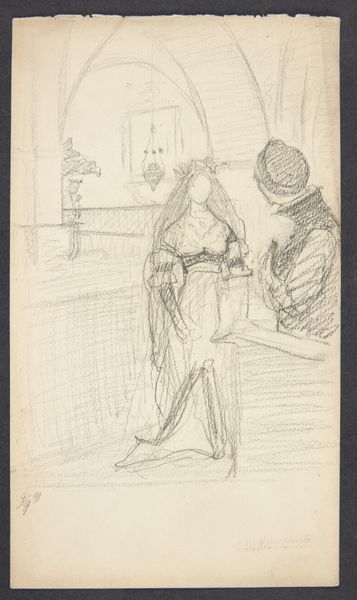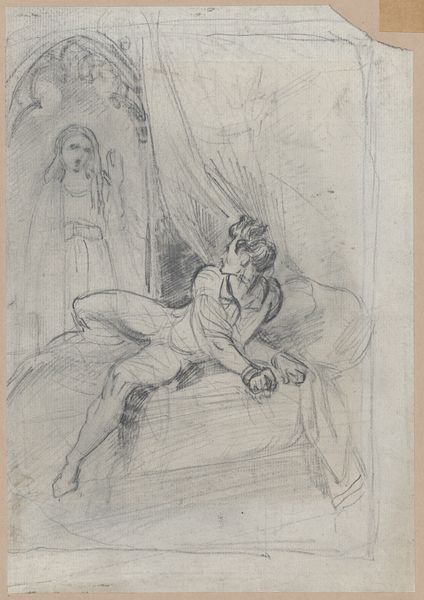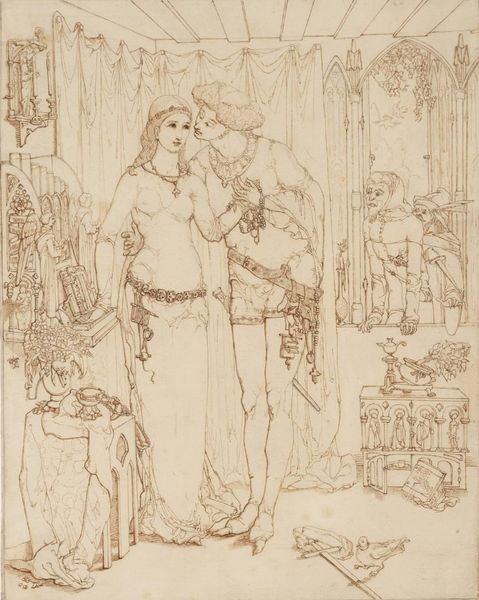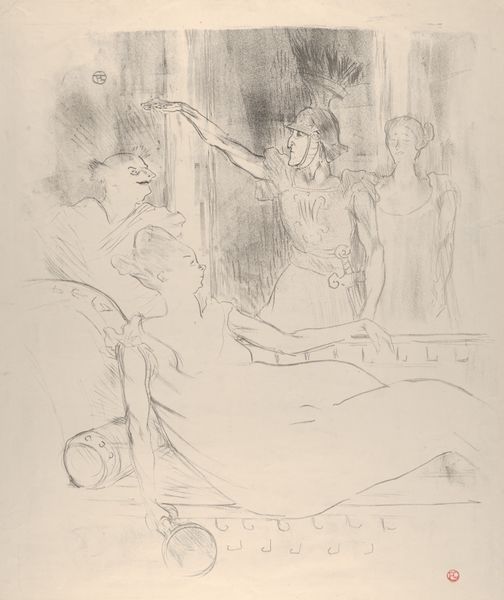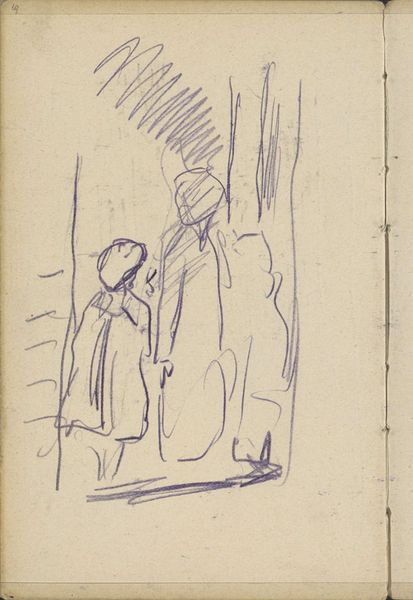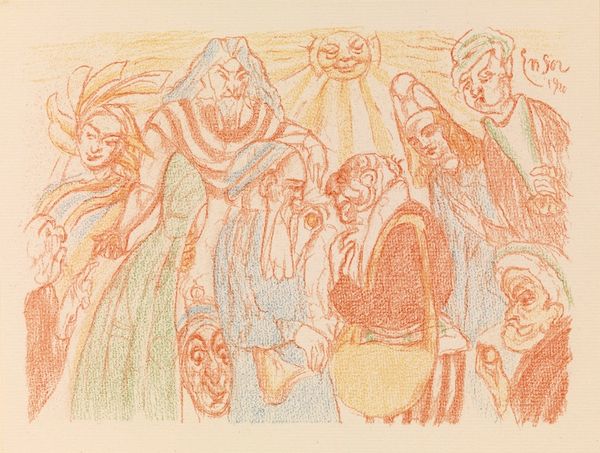
drawing, pastel
#
portrait
#
drawing
#
intimism
#
symbolism
#
genre-painting
#
pastel
#
watercolor
Copyright: Public Domain: Artvee
Curator: This is Édouard Vuillard's "Devant le miroir," created around 1898. It's a pastel drawing, a medium Vuillard often used to capture fleeting moments of intimacy. Editor: My first impression is a sense of quiet introspection. The soft lines and muted colors create a very serene, almost ethereal atmosphere. It feels like we're intruding on a very private moment. Curator: Exactly. Vuillard was a master of "intimism," portraying domestic scenes with a focus on mood and emotional resonance. Notice the woman’s pose; she's lost in her reflection, both literally and perhaps metaphorically. The choice of pastel certainly enhances the intimacy and delicacy of the scene. Pastels were easily accessible, relatively inexpensive and suited the quickly executed, captured moment Vuillard was aiming for. Editor: I'm drawn to the composition. The way the mirror frames the figure, echoing her shape with its curves, creates a really harmonious structure. And the stripes in her skirt provide a lovely contrast with the soft textures elsewhere. How do you interpret those formal elements in the broader context of his work? Curator: Vuillard often used patterns and textures to flatten space and create a sense of claustrophobia. It mirrors the close proximity within domestic interiors, as well as representing the rise in popularity of manufactured, patterned fabric as it entered more people’s homes. The mirror itself can be interpreted through Lacanian terms. Editor: I see. So it's not just about aesthetic appeal; the patterns reflect social realities and evolving domestic economies. The gaze into the mirror too… do you see echoes of earlier traditions or something more contemporary in his perspective? Curator: Definitely both. Vuillard was inspired by Japanese prints, with their emphasis on flattened perspective and everyday subject matter. But he was also deeply engaged with contemporary artistic movements like Symbolism, aiming to convey emotional states rather than straightforward representations. He captures modern anxieties regarding consumer culture’s increasing ability to penetrate personal, intimate space. Editor: I hadn’t thought about that layering of influences, the meeting of "high art" inspirations and more common sources available through trade and consumerism. That's really compelling. Curator: For me, it highlights how the means and the material available at hand can shape what might at first glance appear as an impressionist interior snapshot. Editor: Agreed. There’s a lot more happening beneath the surface than one first realises in “Devant le miroir."
Comments
No comments
Be the first to comment and join the conversation on the ultimate creative platform.
